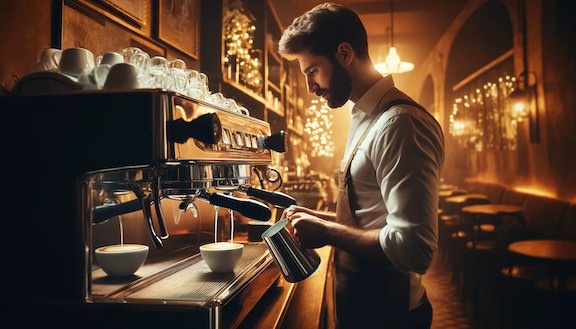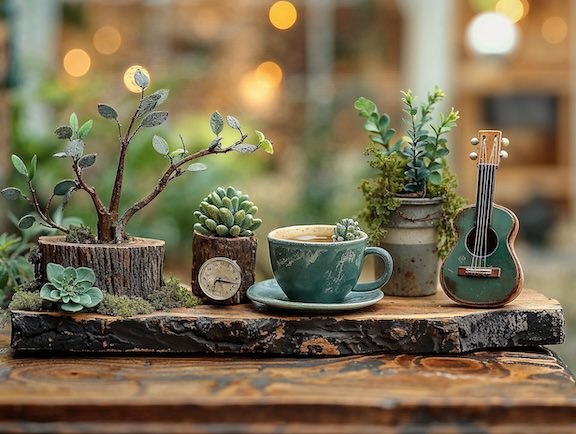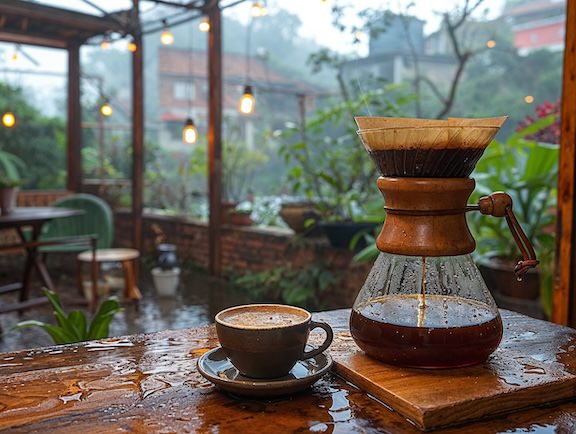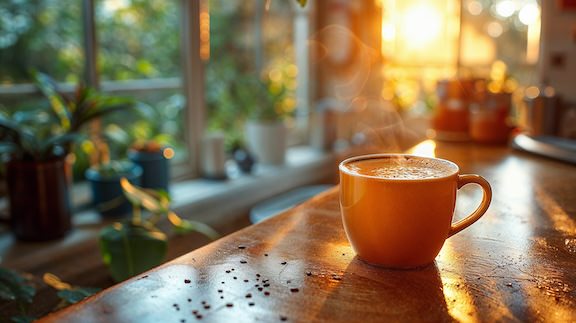“One late night sip of coffee, and I’m awake all night.” That has never been said in this household, but I hear it often enough. I thought it might be interesting to research a bit deeper than just coffee’s impact to falling asleep, taking a look at sleep and dream states.
Coffee, known globally for its ability to boost alertness and provide energy, holds more influence over our physiological states than commonly acknowledged. It has long been recognized that caffeine, the primary psychoactive component in coffee, profoundly impacts brain function, sleep rhythms, and the nature of our dreams. Extensive research has elucidated the mechanisms through which caffeine manipulates our neurological pathways, altering both sleep quality and the thematic elements of our dreams.
Caffeine functions primarily as a stimulant by impeding the natural actions of adenosine—a neurotransmitter integral to fostering sleep. Adenosine typically accumulates in the brain during waking hours, gradually promoting tiredness and helping to facilitate the onset of sleep. However, caffeine obstructs this process by binding to adenosine receptors without activating them, thereby preventing the sensation of fatigue and maintaining a state of alertness.
Caffeine can also enhance the synaptic release of other neurotransmitters such as dopamine and norepinephrine, which contribute to wakefulness and increased cognitive activity. Consequently, ingesting coffee, particularly during the latter part of the day, can significantly disrupt sleep initiation and degrade sleep quality.
Beyond its effects on sleep latency and maintenance, caffeine also exerts a fascinating influence on the content and intensity of dreams. Research indicates that caffeine can amplify the vividness and emotional intensity of dreams. This phenomenon may be attributed to caffeine’s ability to modulate levels of serotonin and norepinephrine—neurotransmitters that play critical roles in emotion regulation and arousal during waking hours and, intriguingly, appear to extend their influence into REM sleep, where most dreaming occurs.
There is research suggesting that caffeine consumption may increase the occurrence of lucid dreams, a unique type of dream during which the dreamer becomes aware that they are dreaming, often gaining the ability to exert some control over the dream narrative.
Despite the intriguing benefits associated with vivid and lucid dreaming, excessive caffeine intake poses substantial risks, including the potential development of sleep disorders, increased anxiety levels, and other adverse health effects. The American Academy of Sleep Medicine advises that adults limit their caffeine consumption to no more than 400 milligrams per day, approximately the amount found in three to four cups of brewed coffee. This guideline aims to balance the invigorating effects of caffeine with its potential to disrupt sleep and induce unwanted neurological effects.
While the relationship between coffee consumption, sleep quality, and dream characteristics is complex, it is clear that caffeine holds significant sway over our nocturnal experiences. Moderate coffee consumption generally poses little harm and can even enhance the richness of dream experiences. However, individuals should be cautious about their intake, particularly in the hours leading up to sleep, to avoid the negative repercussions associated with high levels of caffeine. This mindful approach can help maintain both optimal sleep health and a more enriching dreaming life.
Please note that if you purchase from clicking on the link, some will result in my getting a tiny bit of that sale to help keep this site going. If you enjoy my work, perhaps you would consider donating to my daily cup of coffee, thank you.






